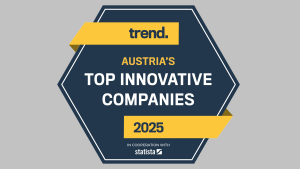The latest Forrester TEI Study commissioned by Dynatrace was recently released, and I had the opportunity to host a webinar featuring two Forrester Consultants to talk through what the study is, what it means for partners, and how to leverage it within your organization.
I recently hosted a webinar with guest speakers, Forrester Consultant Chris Layton and former Forrester Consultant Charlie Dorrier, to dive into the recent Forrester TEI Study in more detail. We covered everything from the study findings, how the study was conducted, how the data was collated, and most importantly – what it means for you, our partners, and how you can leverage it to better serve your customers and business. The Dynatrace and Forrester TEI Study webinar is available to watch on-demand, but if you’re short on time, I’ve wrapped up all the best bits and answered the most common questions about the study below.
Receiving a Return on Investment (ROI) with Dynatrace
In my opinion, one of the most impressive statistics of the Forrester TEI Study is the ROI you could see from deploying Dynatrace – 274% to be exact – and this is also what some of our most common questions surrounded.
ROI or “return on investment” measures how much value is created compared to the required investment. An ROI of 0% means that the benefit of an investment is equal to the cost, so you’re in the same place you started. An ROI of 100% means that each dollar spent on investing resulted in two dollars being returned, so you’re up one dollar. Dynatrace’s ROI of 274% indicates that while the composite organization spent about $5 million on Dynatrace over three years, it received just over $20 million in value from that investment.
Q: Is this ROI you showed realized right away with using Dynatrace? What happens in the long term?
A: The financial model is based on a three-year time period. Forrester was unable to quantify some of the benefits, such as guiding business vision, improving time-to-value, improving inter-departmental alignment, and adding security monitoring. This means that additional benefits may be gained with longer usage of Dynatrace.
Customer and Prospect Benefits
An important aspect of the TEI Study is that its findings were collected from a broad spectrum of organizations – from small businesses to large corporations exceeding $1billion in revenue. Many of our partner webinar attendees asked whether their prospects of smaller sizes would yield the same benefits?
Q: Some of my prospects are smaller than the $2 billion revenue assumed here. Would they still see these benefits? Would the magnitude change?
A: Forrester interviewed folks from a wide variety of companies. Some benefits of Dynatrace, like faster DevOps innovation and gained operational efficiency, were quite consistent. Some benefits, like increased employee productivity and satisfaction, depended more heavily on the company’s circumstances. The recommendation from the Forrester Consultants, and I, is to use the full financial framework in the case study we built and replace the composite organization’s details with that of your prospects.
Q: If showcasing benefits from customers’ environment is challenging to explain, then what points can we highlight to make things easy to understand?
A: If there is a particular benefit that is difficult to explain, there is a section called “Evidence and data” at the start of the study, which is where Forrester listed specific examples of what they heard from existing Dynatrace customers, and this is the exact data they based their analysis within the TEI Study on. To help showcase the benefit, it’s best to look through these bullets and identify which data points and stories are most applicable to your customer or prospect, and then bring those examples into your conversation, asking what that change could mean for them and their organization. Furthermore, there are some quotes in each section (both the executive summary and the section itself) that can be impactful to use as an explanation.
Q: How can we enlist the benefits to the customer on different parameters of Infra, application, DB, and network?
With the advent of cloud and DevOps, technology silos are collapsing into software-defined platforms designed with the application workload and digital business requirements in mind. While the operational model is simplified, the complexity of these new environments requires a full-stack approach to observability that’s a sole source of truth to pinpoint and resolve any service impact no matter which sublayer it emanates from.
Our partners, like yourself, rely on us to innovate and deliver the best platform in the market, and you’ll know the benefits of using Dynatrace far surpass just quantifiable ones. And this is an important element to keep in mind when speaking about the TEI study with your prospects and customers. Such benefits include our ability to help guide the business vision, enable better cross-team collaboration, and improve interdepartmental alignment.
Leveraging the TEI Study
Q: How can you use the TEI Study?
A: One of the broadest questions to answer, but probably the most asked, is how you can use the Forrester TEI Study with your network and bring on new customers? There are many ways to use the Study, including making a business case story part of the value prop and reinforcing this through a compelling, ROI-backed narrative. To help get you started, we’ve created a Campaign-in-a-Box for you, with everything you need on how to leverage the TEI Study for you and your customers.
Still got some questions?
While I’ve aimed to answer the most popular questions in this blog, I’m sure there are many I haven’t covered that were included within the webinar, so make sure you check it out – it’s now available on demand. Of course, if you have any other questions, please reach out to a team member.





Looking for answers?
Start a new discussion or ask for help in our Q&A forum.
Go to forum